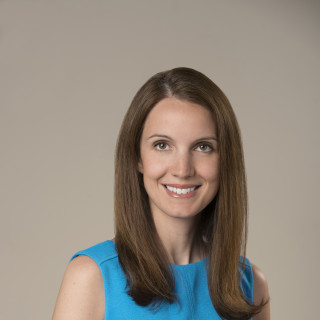![]() An ectopic pregnancy waits in the emergency room. Meanwhile, your pregnant patient in labor and delivery is ready to push, and the office is calling about a postoperative issue on your hysterectomy patient. Such is the life of a busy general obstetrician/gynecologist. The variety of practice and utilization of an expanded skill set are what drew many of us into the field; no two days are the same and they are all interesting and rewarding.
An ectopic pregnancy waits in the emergency room. Meanwhile, your pregnant patient in labor and delivery is ready to push, and the office is calling about a postoperative issue on your hysterectomy patient. Such is the life of a busy general obstetrician/gynecologist. The variety of practice and utilization of an expanded skill set are what drew many of us into the field; no two days are the same and they are all interesting and rewarding.
However, there have recently been significant changes in the field of medicine that are changing the way ob/gyns can practice. In a strategic move called “tracking,” our field is fracturing into separate areas of expertise in what used to be a domain handled by the generalist. Specialization, whether we want it or not, is becoming necessary to maintain competency and a sustainable career.
It is worth noting that tracking is different than specialization through fellowship. Specialization through fellowship occurs after completing an obstetrics and gynecology residency, and then pursuing additional training in a subspecialty area (e.g., urogynecology, gyn oncology, or reproductive endocrinology). In years past, a minority of ob/gyns pursued fellowship. Interestingly today, the number of ob/gyn residents pursuing additional fellowship training is dramatically increasing.
With tracking, ob/gyns are often choosing to focus on just one aspect of a generalist career. They may choose a “gynecology only” practice, or become a “hospitalist” (also known as “laborist”) who focuses on pregnant or postpartum patients. Some are choosing “office only” visits; others are focusing on gyn surgery to maximize opportunities to treat patients with their minimally invasive laparoscopic skill sets. Some actively practicing physicians have started “tracking” independently after completing residency. Institutionally, some ob-gyn employers are already making physicians choose a “track” to specialize in, despite being trained as general ob/gyns. These large organizations find it beneficial to create hospital on-call pools of just obstetricians, and design schedules such that busy operative days are covered by physicians who only do gyn surgery. Of course, those in private practice can continue to “do it all” — but they face significant hurdles, from insurance companies to licensing agencies, while trying to provide all-encompassing care to patients.
There appear to be several reasons for the trend toward tracking. First, there has been a vast increase in medical knowledge, research, and technology. While this is not unique to our field in this information age, the ob/gyn cares for women in all phases of life and must be proficient in care for unique conditions associated with each stage. Examples include the newest prenatal genetic screening testing for a young pregnant patient or the most up-to-date surgical technique for a laparoscopic hysterectomy in a postmenopausal woman. New prenatal genetic screening tools, cancer treatment options, and minimally invasive techniques for surgery are always evolving.
Second, in addition to an exponentially growing body of information to contend with, governing bodies and licensing agencies are increasingly imposing new quality measures and requirements to ensure that we are indeed “keeping up.” These measures are well-intended. It’s hard to argue that parameters for a minimum number of hysterectomies per year to maintain competency in laparoscopic procedures and updated protocols on the obstetrics suite are a bad thing. That said, they do put us in a tricky spot and they may have untoward consequences. For example, in order to keep up with requirements for the minimum number of gyn surgical cases, one must dedicate a significant portion of their practice to surgical procedures, which can be detrimental to the obstetrical skillset. If one is not always on the labor suite, and reading the latest journals regarding high-risk pregnancy guidelines, obstetric skills can quickly languish. Now more often, we are needing to rely on our subspecialist colleagues, like maternal-fetal medicine physicians, to guide us on what used to be standard fare for a generalist.
Further, the medico-legal environment remains tenuous in obstetrics and gynecology. Obstetrics has long been known as a specialty fraught with liability for poor outcomes. Expectations of a perfect outcome with every delivery will always be the unattainable goal. Malpractice lawsuit awards continue to be among the highest of all specialties, including a recent verdict in July 2019 for a $229 million award. Until comprehensive malpractice tort reform occurs in our country, this will not change. In this regard, although physicians don’t like to admit it, defensive medicine is also partially responsible for a shift in practice patterns.
Lastly, but not unimportantly, newer physicians are choosing practices that support reasonable working hours and family life. These tend to be employed positions or positions within large practices where on-call hours can be spread out among larger groups.
In terms of medical education, residency programs are grappling with what to do about the changing career of a generalist ob/gyn and how to best prepare future doctors. Maintaining an outdated training methodology is unsustainable. Increasingly, high numbers of residents are no longer choosing to be generalists for the aforementioned reasons. That said, it is notable that interest in the field of ob/gyn, which has been historically high, remains unchanged by medical school matriculants — it is just what happens after residency that is no longer the same. Indeed, data from the American Congress of Obstetricians and Gynecologists (ABOG) shows that the annual number of residents in obstetrics and gynecology has been static but the proportion of graduates accepted into ABOG-accredited fellowships has increased steadily (from 7% in 2000 to 19.5% in 2012). Likely, that number has increased even more since 2012.
The rationale for why increasing numbers of physicians are subspecializing is the same as the rationale for tracking. Now, the dilemma will be how best to make the transition from our established notion of the generalist ob/gyn to a more defined subspecialist. And while tracking works for some, is it the direction our field should be heading in writ large?
One strong argument against tracking is the undeniable demand and need for the skillset of a generalist ob/gyn in rural areas that cannot support a specialist in every field. We have a desperate need for generalists in rural areas, as 50% of counties in the United States do not have a practicing ob/gyn. Thus, the problem is multifactorial and not nearly as simple as just implementing tracking.
In truth, we cannot abandon the generalist ob/gyn altogether; too many patients still need and desire a generalist. Interestingly, an idea has emerged that involves a “rural” ob/gyn track to address the care deficiencies in rural America. This rural physician’s training would be designed with the intent of future practice in a rural area. In fact, the first ob/gyn to complete a separate rural residency track will graduate from the University of Wisconsin in 2021. Though Wisconsin is the first to offer a rural-focused residency program, it may not be the last.
It remains to be seen if tracking is the answer for our specialty. There are certainly pros and cons to this controversial change, but it’s unarguably gaining momentum. For some, it is forcing physicians to close the door on areas of their practice they don’t want to give up. Many ob/gyns went into the specialty to give comprehensive care to patients. Tracking is changing the career we trained for. Concerningly, it appears that those desiring a career containing a mix of surgery, office-based care, and deliveries can still have it all, but they may want to look at practicing in a rural area.
I think support for those desiring to continue as a generalist ob/gyn should be encouraged — without them, our rural areas will undoubtedly suffer. Looking forward, those in private practice will continue to have the autonomy to choose how they want to structure their practices, but as more physicians leave private practice for employed positions, a wide-ranging practice may not be an option down the road.
Dr. Valerie A. Jones is a board-certified obstetrician/gynecologist who is passionate about women's health care, personal finance for physicians, and motherhood in medicine. Her writings on these topics can be found on her website. Dr. Jones is a 2019–2020 Doximity Fellow.
Collage Illustration by Jennifer Bogartz / Getty & Shutterstock







